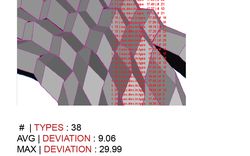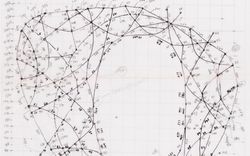A Fish Is Kind of Aerodynamic
A conversation between Greg Lynn and Rick Smith
- GL
- I think you were involved in helping with the Barcelona Fish…
- RS
- Yes.
- GL
- You were also very involved with the Lewis House. I’m interested in the milieu you were working in and what brought you to that project.
- RS
- Back in 1979 I worked for Lockheed Martin. Before then, at school, I’d learned three-dimensional modelling through Applicon and Computervision. At Lockheed I worked on a program called CADAM, which was their home-grown system. Lockheed sold it to Dassault Systèmes in France, and then Dassault decided to write a three-dimensional program on top of that. Around 1982 I joined IBM because CATIA had come out publicly and I’d heard that IBM was going to start marketing the program to a number of different industries.
But well before all that I actually went to school, California Polytechnic State University in San Luis Obispo, to be an architect. This was in the early 1970s. And my dad, who worked for IBM, showed me how they were developing techniques to draw on computers. That was back in, oh—about 1968, I think, when my dad showed that to me. At Cal Poly everything was pencils, paper, and T-squares. I knew that the computer technology was developing, so that’s when I transferred to Brigham Young University where they were actually teaching it.
I thought: This is the future. And if they’re not teaching it in school, I’ll go another way; even though I’d always wanted to be an architect. So I went through ten years of IBM, worked in the aerospace industry, worked on the Space Shuttle and got involved in medical devices.
When the Berlin Wall came down, you know, Reagan and that whole political environment, the aerospace industry just died. IBM started laying everybody off. It was two days later that I got a call from Frank Gehry to my office. Well, it wasn’t Frank himself, but one of his staff, who called and said, “Do you know how to build a building in the shape of a fish?” And I told him, “A fish is kind of aerodynamic… Sure.” So that’s when I got involved with Frank. It was about July 1991.


















